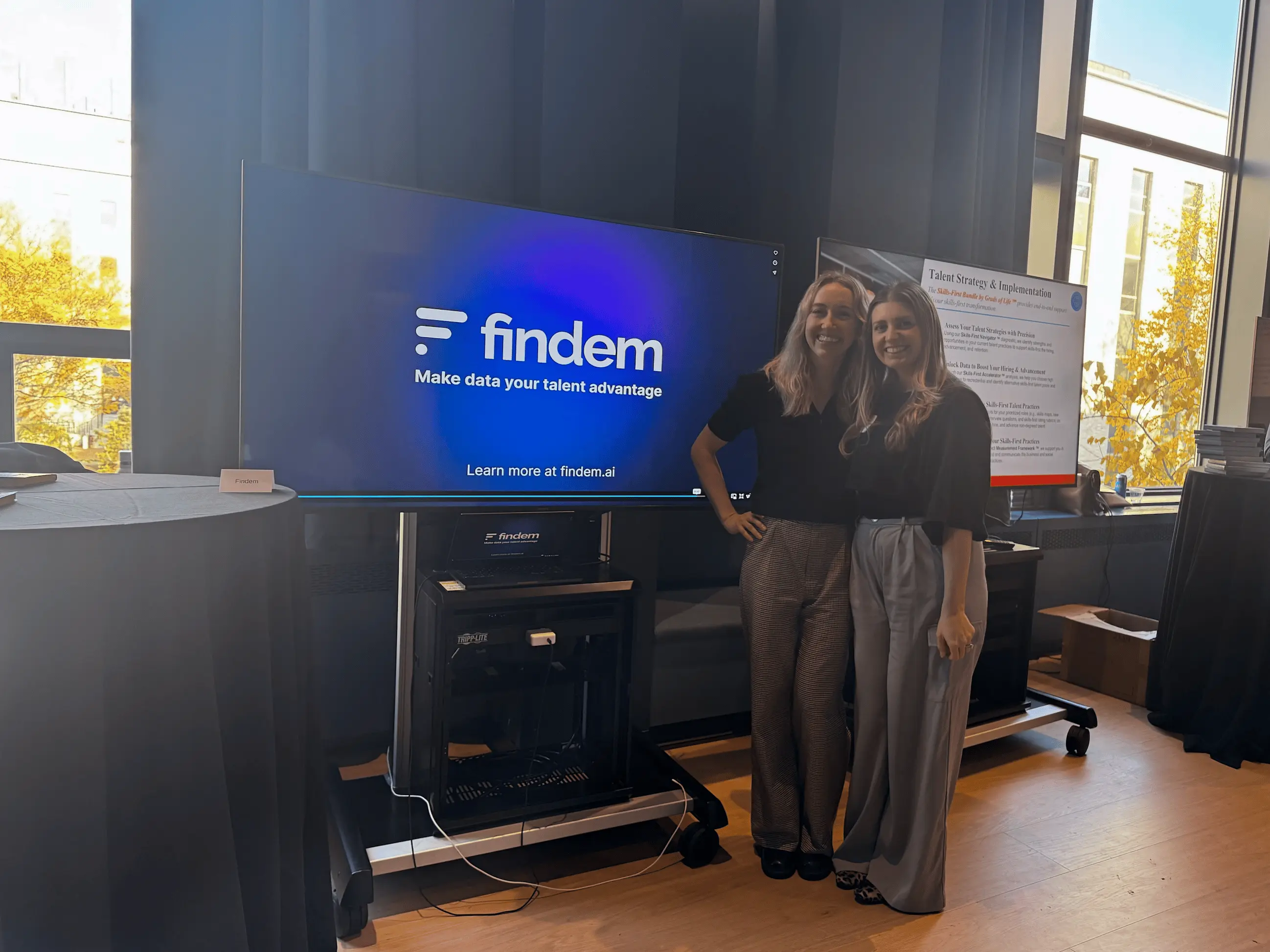.svg)
Building a better talent tech stack with Tey Scott
.svg)

Q&A with Tey Scott
I first met Tey Scott when she joined me for a lunch-and-learn at the Talent Collective. We had invited women talent leaders and recruiters to a conversation about building TA teams and AI. Just as we started our discussion, thunder, lightning, and pouring rain nearly silenced us. Tey deftly pivoted the conversation into small group discussions and saved the day.
She’s a Silicon Valley talent superstar who has helped marquee brand companies scale through post-IPO. She’s built and led global teams of 150+ professionals at Citrix, LinkedIn, ServiceNow and, most recently, Medallia. That’s where we first connected when Medallia added Findem to their talent tech stack and she became an early advocate for our Ask Findem AI integrations.
Tey recently left Medallia for a well earned break and is gearing up for her next play. I caught up with her to discuss the current state of the talent tech stack, what she’s most excited about in the future of talent acquisition, and why she recently joined the Findem advisory board.
You’re known as a builder and have seen some amazing companies through the ups and downs of growth and contraction. Tell me a little bit about your journey.
To me, the best part of being an operator who likes to build is the opportunity to help transform a company’s hiring maturity in order to scale and contract as needed. I’ve done this sort of transformation now going on 4 times and each time has provided a unique challenge regarding people, process, and technology. I like to think of technology being at the center of the transformation given the need for data-driven decision making in everything we do.
What are you seeing right now in the talent space? Why is everyone talking about candidate experience?
I think we all know there is a massive market transformation taking place. As businesses come off of heavy pandemic hiring into a more sustainable model for growth, we as talent practitioners need to transform as well. Instead of the massive hiring spikes we saw for several years, we now move back into a slower pace focused on higher quality.
"Given our need to focus on a quality candidate experience and the sheer number of applicants on the market, the job of identifying people with the right skills and keeping the hiring bar high can be a daunting task."
As of Feb. 29, 182 tech companies have laid off 46,066 workers in 2024. One position opened up for 1 day received 1000+ applications. The market has changed, the recruiting world has never needed to step up and innovate more than right now. Technology can and will help us do this at scale.
What are some of the challenges that are holding talent teams back right now? Why are they not able to innovate?
I won’t say they aren’t willing and able to innovate, they’re just focused on the wrong things. Plus, the pressure is on with regard to shrinking teams and budgets. Those working in hiring right now are definitely being asked to do more with less.
At Medallia, after a period of high growth, we too began contracting. When we first brought in Findem, we had been in a huge hiring spurt. Findem worked with us during both periods. First, we used Findem to automate sourcing at the top of the funnel to streamline our ATS searches (the basics). Then we used Findem market data to help the company decide where to grow internationally (innovation/data-driven decision making).
According to a recent HR.com survey, just 1 in 4 talent leaders rate their TA tech stack as good or excellent. How does the talent tech stack constrain the talent process?
Applicant tracking systems have evolved and still provide varying levels of insights and data. But, depending on which one you are using, the functionality can be very different.
"This leads to more rigid, siloed systems that dictate the process, when in actuality this needs to be turned around with processes being supported by the systems."
By using a product like Findem you can integrate the latest AI and machine learning across the entire recruiting process to help wherever you need it most.
What role does the talent tech stack play in the ability for the talent team to go from order takers to business partners?
When I think about the type of data hiring managers and recruiters focus on, it’s often the wrong things or the things that don’t matter as much to the business.
For instance, I see a lot of teams focus on “how the sausage is made” in recruiting. They share requisition-based or recruiter productivity metrics vs. providing insights around talent flow, talent density, diversity, and hiring efficiency.
Are you asking the right questions? What is the business goal we are going for? When and how are we growing internationally? Our job is to enable the company to win. What am I doing to drive value?
Also, for the recruiting teams, it’s imperative to fully understand the business you're recruiting for. This is why we implemented an enablement series at my last few companies where hiring managers, leaders, and our partners teach the recruiters about the business on an ongoing basis. In a dynamic environment, making the recruiters better business people is an ongoing need.
Let’s talk specifically about what this means for building a diverse workforce. The most common approach to building a diverse slate is by adding candidates with different backgrounds to the talent pool. What other approaches have you tried?
Recruiting is cyclical. I’ve been reading a lot about DEI teams and programs being defunded or even dismantled. It’s sad to me because I think when the tides start to turn again and hiring picks up, we will once again be behind the curve if we don’t stay focused on building diverse teams now.
But, what if you don't actually need a team to stay focused on this? What if you can turn this on and it becomes an automated part of the sourcing strategy. With Findem, we turned this on, and successfully met our slating and representation goals even when we were slowing down hiring.
We all know that the applicant tracking system is the cornerstone of the talent tech stack, yet just 15% of talent leaders feel that their ATS helps them attract or find higher quality candidates. What should talent leaders be looking for in an ATS or to enhance an existing ATS today?
Powerful candidate matching is a must have for top of funnel activity in your own network ATS. Findem automatically matches prior applicants to open roles. Findem's attribute-based profiles, AI-powered search, and breadth of integrations enable you to find candidates from your existing network for open roles without manual research or toggling between tools.
"Findem's top of funnel auto matching is a game changer when it comes to finding those silver medalists or folks already in your ATS."
For compliance reasons, we often do need to post a new position but combining new with old applicants and narrowing down to the best matches significantly reduces the amount of time applicants need to spend in the dreaded “black hole” of no response.
With the matching algorithm, you can surface high quality, diverse candidates throughout the network at lightning speed — freeing up recruiters to focus on the next steps in the hiring process.
You are now a Findem advisor, helping us innovate and build the product for tomorrow’s recruiting and talent tech stack. When you talk to peers about Findem, what do you tell them?
There’s so much to Findem, especially at this moment. Our industry demands innovation.
"Netting a better candidate and hiring experience AND driving more efficiency AND surfacing the best matches automatically = hiring experience. That’s innovation with a focus on skills first at the top of the funnel, and that’s Findem."










